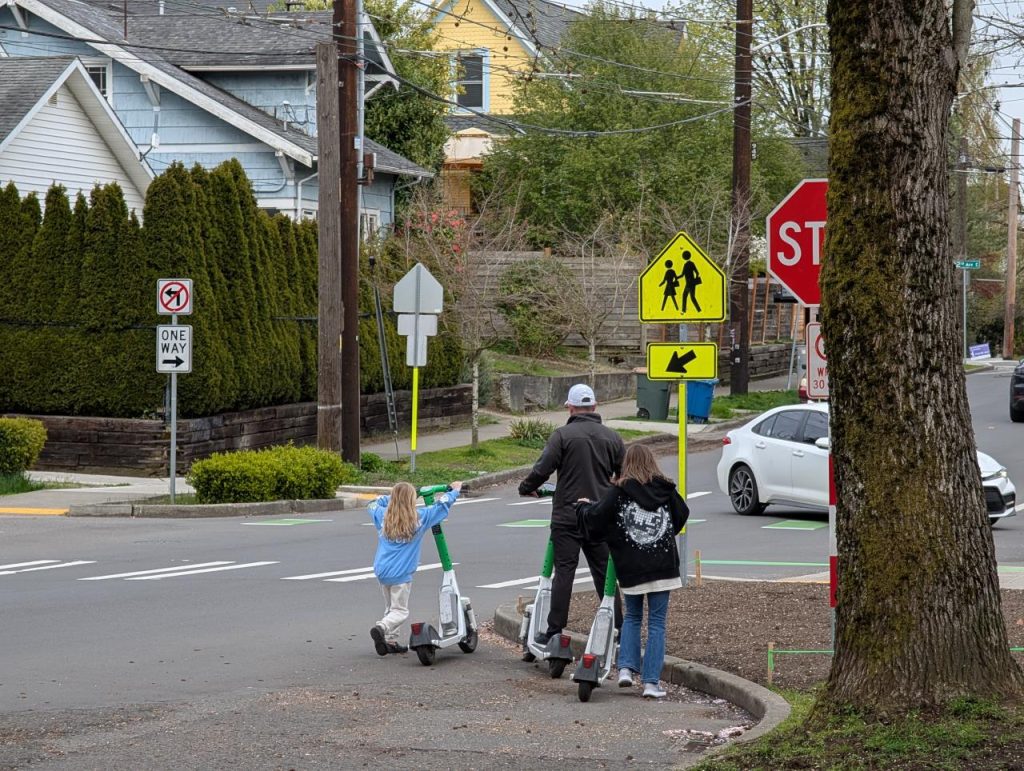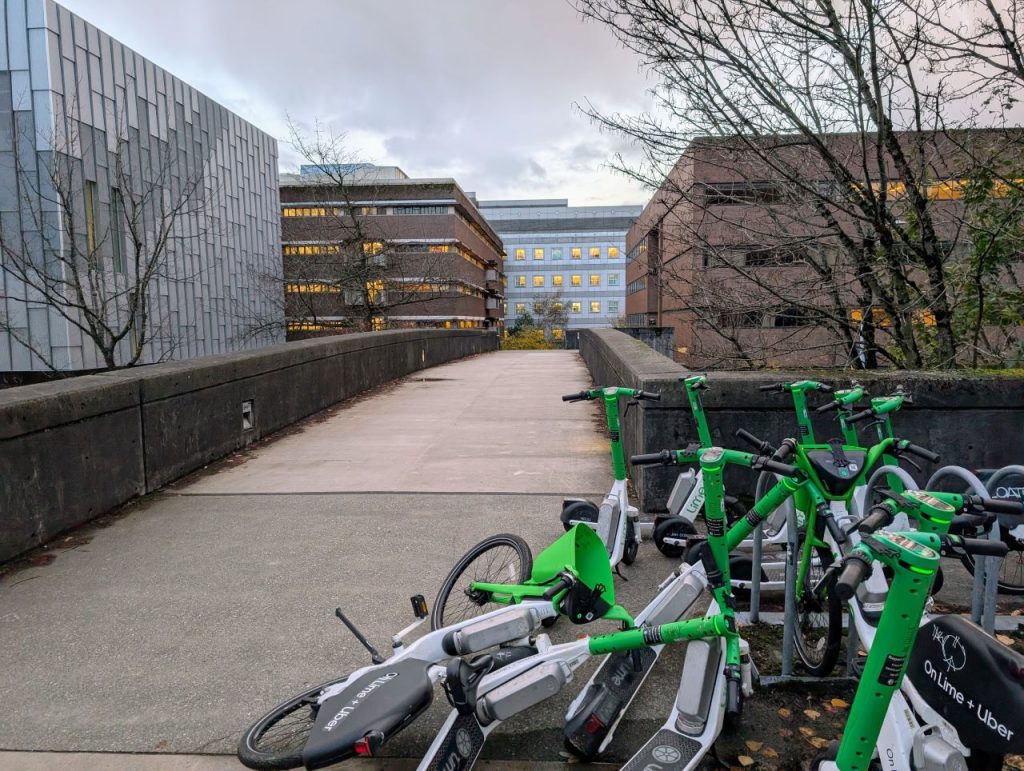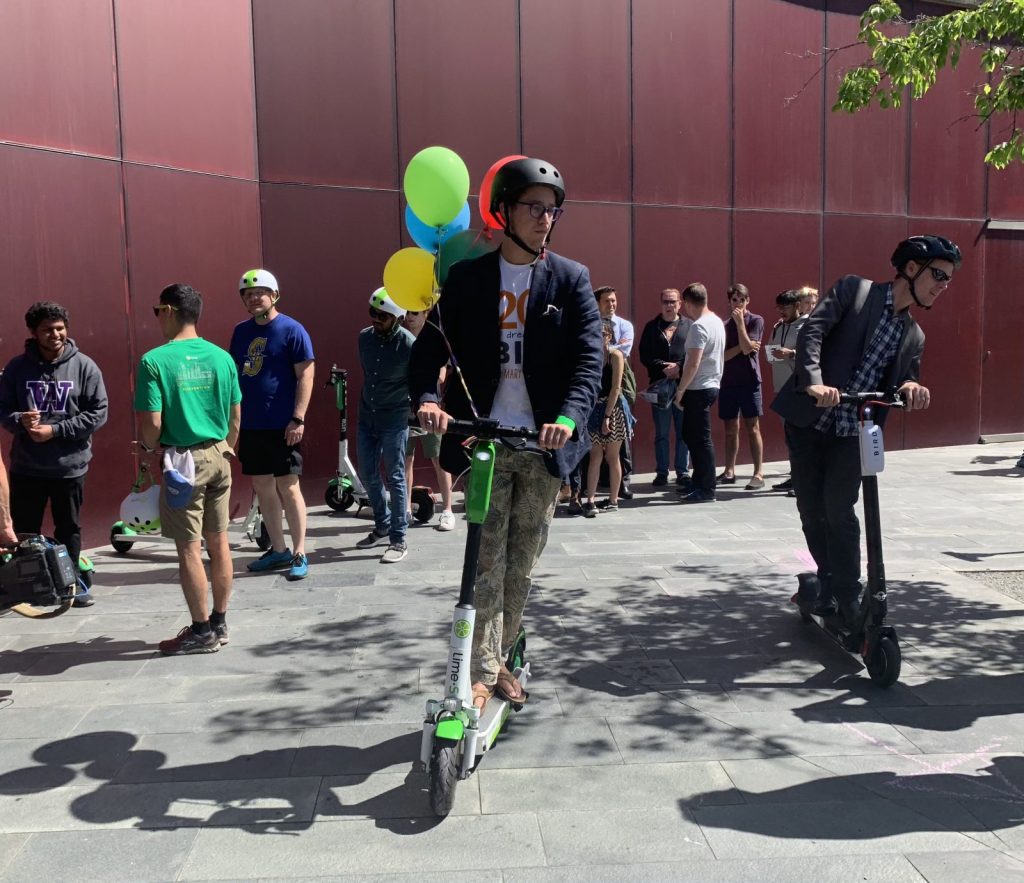Seattle’s free-floating bikeshare and scootershare programs have continued their path of steady growth. Across three companies, Seattleites clocked 6.3 million rides in 2024, a new record high, up 28% over 2023. The momentum has continued in the first quarter of 2025, with ridership up 76% over the first quarter of 2024. If this pace is maintained, Seattle would exceed 10 million rides in 2025.
Lime has settled into its role as the dominant scootershare and bikeshare provider, boasting nearly 5.9 million rides of those 6.3 million rides in 2024 — more than 93% of the total. The program’s performance led Hayden Harvey, Director of Government Relations at Lime, to call Seattle a top micromobility city.
“This year Seattle truly became one of the great micromobility cities in the entire world and Lime is so proud to be a part of decarbonizing the city’s transportation future,” Harvey said in a statement. “The city’s commitment to sustainable transit options and technological innovation make it a perfect place for Lime to go all out here, bringing new vehicle modes like our throttle e-bike and LimeGlider and we believe that new optionality played a key role in the incredible ridership records we saw throughout 2024.”

Lime is looking to expand its service area, with vehicles now available on the University of Washington campus, helping a few more students get to class on time. Seattle was also the first market that Lime tested out its new glider style seated scooter in fall 2024, with the company pledging more new types of vehicles down the pike.
“2025 is about building on that success by doubling down on investments, expanding our fleet and service area, and deepening our partnership with the city,” Harvey told The Urbanist. “We’ll be bringing more of our newest and best vehicles to Seattle, we have already expanded in 2025 to include the UW campus and hope to do more connecting the greater region, and we look forward to continuing to collaborate and advocate with the Seattle Parks Department and SDOT to increase access to Seattle’s beloved public spaces.”

Scooters are the most popular vehicles with micromobility app users, but the e-bikes in Lime’s fleet are always racking up rides, with nearly 1 million in 2024 — 15% of its overall ridership. The booming bikeshare ridership is part of a larger boom in e-bikes that’s accelerated in hilly Seattle. Free floating scootershare has continued to expand into other regional cities, with Woodinville just the latest city to consider allowing them to operate within its borders.
Lime has credited improvements to Seattle’s separated bike lane network with driving the program’s popularity.
Per ride costs have risen considerably since the $1 ride bikeshare heyday of 2018. Today, Lime scooters or e-bikes cost 47 cents per minute plus tax and an unlock fee. On the other hand, vehicle quality has increased considerably as well, with all vehicles electric-assist. Riders can save considerably by purchasing weekly or monthly passes or shorter term minute bundles. A 280-minute month-long Lime pass currently costs $43.99, which is a 70% discount over full pricing and waives unlock fees.
Parks are still mostly off limits
Increasing micromobility access within Seattle parks has come more slowly. In March 2024, The Urbanist highlighted the fact that Seattle Parks properties had been cordoned off to scooter and bikeshare access, even as access to cars had been restored throughout parkways after a brief pandemic hiatus.
While keeping shared vehicles off areas where all bikes are supposed to be banned makes sense, the no-go zones are blunt. For example, none of Discovery Park’s 534 acres are in a Lime service zone at time of post, including roads with full car access and trails where regular bikes are permitted.
The Urbanist, March 4, 2024
Despite a vague pledge from the City to work on the issue, so far, the park “no-go zones” remain intact, outside of a few limited exceptions. Intended to limit the number of users flying through serene park spaces en route to somewhere else, the move counterintuitively encourages people to drive to parks instead.
Bikeshare’s winding history
Seattle recently passed its eight-year anniversary of shuttering its municipally owned Pronto Cycle Share program, which opened in 2014, but never got off the ground. That system relied on docked bikes, but the City balked at the startup costs necessary to expand the system and voted to shut down the program, which happened March 31, 2017.
Killing Pronto briefly left Seattle without a bikeshare program, but in August 2017, the Seattle Department of Transportation (SDOT) launched a new program using a public-private partnership with vendors offering dockless bikes. These startup companies were flush with investor cash at the time and soon flooded the city in bikes that were cheaply built but priced aggressively at just $1 per 30-minute ride initially as the companies battled to capture the market.
Given the low prices and proliferation of bikes, bikeshare ridership took off, reaching a million rides within its first year across the three initial providers. But it also was quickly becoming apparent the business model wasn’t working for many of the companies. Hopes of multiple companies firmly establishing themselves to compete and keep prices didn’t really materialize. In 2018, Chinese bikeshare company ofo pulled out of Seattle (and much of the U.S. market) entirely and by 2020 had folded under a mountain of debt. Spin, meanwhile, announced it was abandoning bikeshare and pivoting to scooters. That left Lime bikeshare on top.

Despite having the Seattle market mostly to itself for a time, raising prices significantly from those early one-dollar ride days, and still seeing significant ridership, Lime still was not turning the profit it hoped to and it wound down service and laid off staff at the end of 2019. Lime’s decision may have stemmed from Jump, a startup that was bought by Uber in 2018, entering and gaining a big share of the market.
Additionally, operators were starting to focus on e-scooters as a long-floated scootershare program finally emerged in 2020 after much foot dragging by the Durkan administration. Lime promised it was coming back.
The Jump versus Lime battle never happened, however, as Jump bought a stake in Lime, who folded the services together. This briefly left Seattle without bikeshare again as the companies processed the merger, but Lime slowly returned its e-bikes to service over the summer of 2020 — now rentable though the Uber app, in addition to the Lime app.

Seattle’s scootershare pilot launching in late 2020 did turn the companies’ attention away from bikes, at least initially, as scooter companies entered the mix. Scootershare ridership took off and exceeded 10,000 daily trips in August 2021, while bikeshare averaged below 2,000 daily trips all year, as the influx of scooters crowded out bikes. However, bikeshare rebounded in 2022 and continued to grow in 2023.
Injury and clutter issues
Micromobility programs, and e-scooters, in particular, have taken significant heat for safety issues. A recent KUOW report noted that the city saw 163 serious injuries from e-scooters and e-bikes last year — a figure that includes both private and rental vehicles. While the Pronto system included helmet dispensers with its bikeshare stations, the free-floating era has come with a ride-at-your-own risk mentality.
Safety concerns were the reason that Mayor Jenny Durkan cited for delaying approval for e-scooters early in her term. Ultimately, Durkan relented and allowed the program to move forward in late 2020.

The companies do offer discount for riders who verify they are using a helmet, but there’s no requirement to actually wear one. Helmets are not a safety panacea, but they do decrease the chance of catastrophic head injuries. A helmet rental system could make it more feasible for scooter users to deploy them, but hasn’t yet been implemented, and would be very cumbersome to implement given the free-floating nature of the network.
While scooter injuries are a growing worry, Seattle did have the distinction of recording no bike deaths in 2024, and halving its pedestrian crash death total from its 2021 peak of 20 to 10, at least in preliminary data. SDOT does not have a separate category for scooters in its data and lumps them together with pedestrian deaths and injuries. While trendlines for active users were encouraging, Seattle’s traffic fatality total was up slightly overall in 2024 due to an uptick in deaths among motorists and motorcycle users.
The other major criticism of dockless scootershare and bikeshare program is that the tend to clutter sidewalks, trails, and bike lanes when users are not careful about parking or they get knocked over subsequently. Similar to helmet, there hasn’t been a full fix, but the apps do incentivize users to park correctly by providing instructions about not blocking sidewalks and requiring users to take photographs of their parked vehicle, which is AI-verified for anything major amiss — hardly foolproof, but better than nothing.
Troubleshooting
An SDOT spokesperson has encouraged users to highlight issues so that the agency can help troubleshoot the boundaries or other issues with the service.
“We can’t fix a problem that we don’t know about, so if people encounter other roads where electric bikes and scooters are supposed to be allowed but the shared devices aren’t working, then we hope they will tell us so that we can look into it and troubleshoot the geographic boundaries,” Bergerson told The Urbanist in 2024. “In the past we have been responsive to the occasional feedback when the geographic boundaries weren’t working as intended, and have made adjustments to fix any unintentional issues.”
Program staff can be reached at ScooterShare@seattle.gov, BikeShare@seattle.gov, or by phone at (206) 684-ROAD.
Doug Trumm is publisher of The Urbanist. An Urbanist writer since 2015, he dreams of pedestrian streets, bus lanes, and a mass-timber building spree to end our housing crisis. He graduated from the Evans School of Public Policy and Governance at the University of Washington in 2019. He lives in Seattle's Fremont neighborhood and loves to explore the city by foot and by bike.



